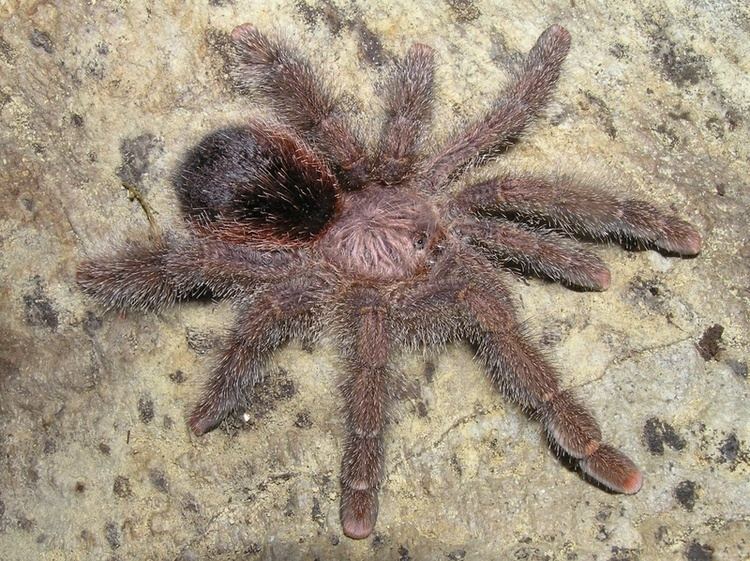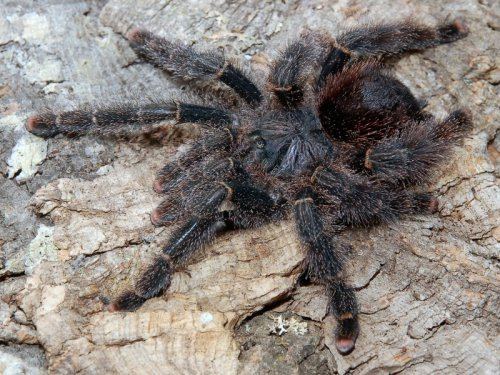Kingdom Animalia Class Arachnida Suborder Mygalomorphae Scientific name Avicularia bicegoi | Phylum Arthropoda Order Araneae Family Theraphosidae Rank Species | |
 | ||
Similar Avicularia aurantiaca, Avicularia huriana, Goliath pinktoe tarantula, Avicularia urticans, Acanthoscurria musculosa | ||
Unpacking avicularia bicegoi doros a samica dzi ki patronite
Avicularia bicegoi is a species of large tarantulas of the genus Avicularia. These spiders may be frightening in appearance due to their large size (body length in excess of 2 inches, i.e., 5 cm.), but they share the pacific behavioral traits of most of the Avicularia species. In general, they bite prey and rely on their urticating hair and flight for defense from predators. Unlike many new world tarantulas, spiders in the genus Avicularia do not flick their urticating hair. Instead they rub their abdomen directly on their perceived attacker. They may also shoot feces if frightened.
Contents
As with other Avicularia, these spiders are arboreal. They build a silken shelter in a protected place amid the branches of trees or bushes. They are largely nocturnal in habit and so tend to eat moths and other insects that move about above ground at night.
These spiders move very rapidly, even over very smooth surfaces such as glass. The two claws that end each leg are tufted with microscopic fibers that adhere to such surfaces by inter-molecular attraction. They have fairly good vision, but they are also sensitive to vibrations and to the rapidly changing air currents created by the beating wings of flying prey. When moths or other such insects come within reach these spiders support themselves using their rear legs and reach out to grapple their prey with their front legs.
Avicularia bicegoi are native to Brazil. Their venom is not known to be medically significant and they rarely bite people. They are regarded as rarely available in the pet trade but highly suitable to beginning tarantula fanciers.
Avicularia bicegoi jumping

